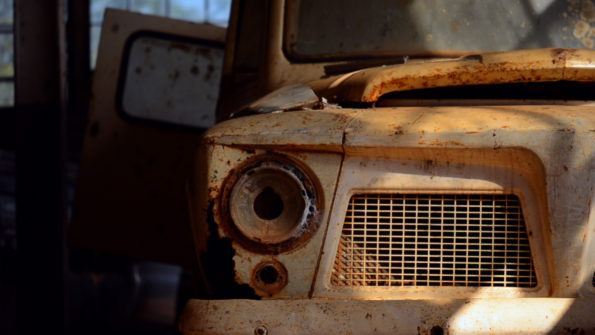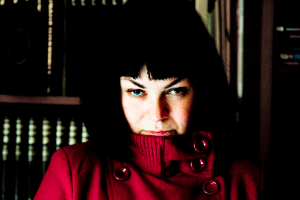Search
To search for an exact match, type the word or phrase you want in quotation marks.
A*DESK has been offering since 2002 contents about criticism and contemporary art. A*DESK has become consolidated thanks to all those who have believed in the project, all those who have followed us, debating, participating and collaborating. Many people have collaborated with A*DESK, and continue to do so. Their efforts, knowledge and belief in the project are what make it grow internationally. At A*DESK we have also generated work for over one hundred professionals in culture, from small collaborations with reviews and classes, to more prolonged and intense collaborations.
At A*DESK we believe in the need for free and universal access to culture and knowledge. We want to carry on being independent, remaining open to more ideas and opinions. If you believe in A*DESK, we need your backing to be able to continue. You can now participate in the project by supporting it. You can choose how much you want to contribute to the project.
You can decide how much you want to bring to the project.

Entering Farce and Artifice, Melanie Smith’s exhibition, we should let this ideal title warn us of what we are going to see. Organized from seven key words (abstraction, urban, colour, body, nature, archaeology and scale), the sample makes a journey through his work form the early nineties to the present and through different formalisations (painting, sculpture, installations, photography, video), deals with a series of present tensions in the Mexican society in relation with the British (born in Poole, the UK, has developed his career in Mexico during the last 30 years).
How are metropolis formed? How is the idea of modernity established? How is it reconsidered? How is the structure of a megalopolis as Mexico City defined? Can the organisational collapse of a city continue generating life? To what extent is geometric abstraction present in the configuration of cities? Spiral City (2002) is an answer to the work Spiral Jetty, created in 1970 by Robert Smithson in the desert of Utah. And if the latter –one of the most representative works of Land Art– was located in the nature, where nothing seems to have modified the surroundings, Smith’s work shows, on the contrary, the capacity of humans to transform the context and their inevitable need to do it constantly, creating a series of immeasurable dystopic surroundings in which to try to go on with their life (or not). A group of places in which modernity enters dialogue (and conflict) with tradition, identity with globalisation, nature with industrialisation, order with chaos, colonisation with resistance and death with life; transforming all these spaces in a sort of chaotic palimpsests in which the pass of the time overlaps infinite layers of reality.
One of these dystopic surroundings is Fordland, city located in the heart of the Amazonas and created by Henry Ford in the 30’s to establish thousands of hectares of rubber plantations. A city that at first was destined to satisfy the demand of rubber of Ford but that became his major failure and up until now it remains “abandoned”. Smith, in Fordland, his homonym work of 2014, places there his camera and observes through the lens all those small gestures and evidences that demonstrate that the city is (in spite of this supposed failure, or maybe thanks to it) lively. A failure perhaps of capitalism, but not of life that makes its way through industrial ruins.
Another of the works that best shows this tension between chaos and modernity is Aztec Stadium (2010), in which Smith took 3000 students of public Mexican schools to the famous football stadium to form, together, enormous mosaics that in a sense represented that tension. From the Red Square by Malevich going through several images of the Mexican nationalist imagery or icons of the popular culture, all these images were taken through the cameras by a chaotic, organic and apparently “unorganized” process. The idea of converting the reinterpretation of several elements of history in a tool to analyse the present is thus an unquestionable constant in his work. During this journey through the last 30 years of his work memories to Hieronymus Bosch or to Pieter Bruegel the old one, but also to Monty Python, to David Lynch or to Alice in Wonderland. We talk about works as Bucolic Obscurities (2017) or Bulto, in which the alteration of the stairs, the fragmentation of the body, the comedy of the absurd, the importance of the ritual or the presence of the grotesque body are closely related. This same body is build, destroyed and rebuild in Irreversible, Illegible, Unstable (2012); work in which, during two weeks and along with twenty more people, Smith created 3000 fake archaeological remains from moulds. 3000 remains that, in an exercise of absurd archaeology that denies its original purpose, were ordered and classified. 3000 remains that, in the end, are nothing more than motionless bodies, bodies that could represent those that form history. Bodies that, after all, could also be a sham. Why, what is history but a palimpsest, a constant superposition of shames that sometimes its result is the instauration of some sort of truth? Melanie Smith says that “nonsense has the power to deconstruct”. And deconstruction, let’s face it, is an essential step to continue (re)building.

It’s hard for Marla Jacarilla to define herself, though she’s been obstinately trying to, since a few years ago they told her it would be good for her to have an artist’s statement. She makes art (or at least tries to) she writes about film and every now and again reflects on things that usually pass unnoticed. Somehow or other this all comes down to one thing: an obsession for the letters that form words, that then form sentences, that form paragraphs, that form chapters that tell us stories.
"A desk is a dangerous place from which to watch the world" (John Le Carré)